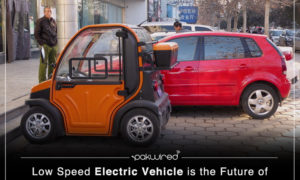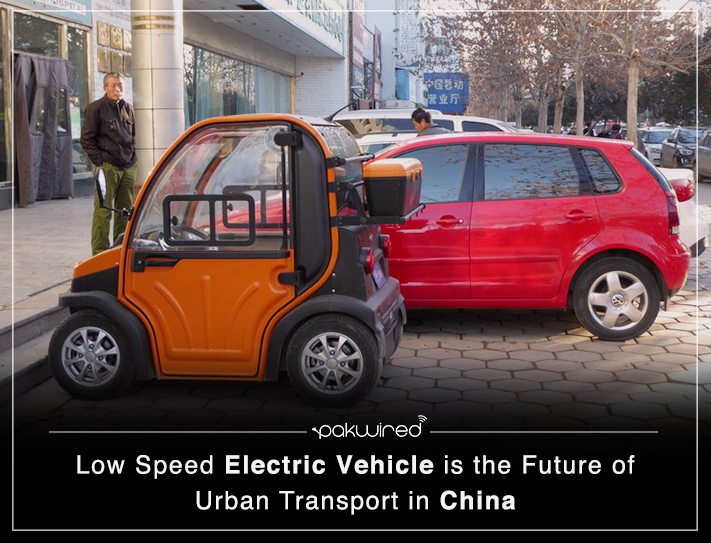As countries around the globe battle to stop global warming, China has made the move to low-carbon transport. National electric vehicle producers have always received critical support from the Chinese government as they develop low emission vehicles. But sadly, their sales are overshadowed by a small competitor; the low speed electric vehicle. Regardless of the name, low speed electric vehicles (LSEVs) aren’t really that much slow.
With a top speed of 60km/h, they are sufficiently quick to get around enormous and intensely congested urban areas. Most models are reduced, looking like three-wheeled utility vehicles or golf carriages. As parking spaces are becoming more and more limited, these small vehicles prove to be extremely pivotal as they occupy very small space.
Cost Efficiency and Smaller in Size
Significance of the comfort of compactness aside, the greatest attraction of the low speed electric vehicle is its cost proficiency. It comes with a normal sticker price of £4,000. In addition to this, owners of these vehicles also get a license plate. The license plate is issued to everyone regardless of the car they are driving.
It is indeed wonderful, in light of the fact that up to this point, most LSEVs did not have a license plate. Until October 2016, there were no tenets administering the production or utilization of LSEVs at all. Now, the legislature has declared its goal to supervise the division. As a result, the vehicles are set to assume a noteworthy part in China’s fast urbanization.
By 2020, China’s new urbanization plan predicts the relocation of 100 million citizens to third and fourth level urban communities. Because of this, moderate transport is very important. By picking up oversight on the development and improvement of LSEVs, the Chinese government has procured another instrument for reshaping the urban environment.
Specifically, China has notoriety for automobile-focused urban areas, which experience the ill effects of overwhelming traffic and air contamination. Even though the better choice is to move the public to local transport, LSEVs can assume a noteworthy part in tidying up Chinese urban communities, by offering a more conservative, low-emission alternative for the private car owners.
Besides the low speed electric vehicle, there are additionally around 300m electric bikes of various shapes and sizes. Truth be told, electric bikes are at present the most prominent alternative vehicles in the history of automobiles in China.
However, for quite a while, electric scooters have been an issue in the side of city powers, which support advanced vehicles and automation to make their urban areas look more modern. In fact, stricter instructions have been forced in Beijing and Shenzhen, among different urban areas, with an aim to ban their use.
The survival of the electric scooters is hard to predict but according to research into low-carbon portability development in China, it is proposed that electric scooters and LSEVs to keep on co-existing and rival each other for a few decades to come. However, the Chinese government’s choice to give LSEVs formal lawful status will give their makers a fresh start in the low-tech industry.
As the electric vehicle industry will now be under check by the government, it is expected that 90% of the manufacturers could go out of business as the standards will be raised and strict rules will be applied.
China is the country that currently has the largest number of LSEVs than any other country across the globe. It also has the largest number of LSEVs used for car sharing. This is also the reason why the government has been keen on building and supporting the low speed electric vehicle industry.
There is now a developing worldwide enthusiasm for small LSEVs, incorporating foldable EVs in European urban areas and 3D printable EVs in Japan. In any case, in this way, numerous universal urban communities have been hesitant to receive them on a vast scale. Therefore, LSEVs have remained a minor “neighborhood EV“.
The Chinese government will have to assert its capacity to raise standards by controlling the electric vehicles sector. This will not only help businessmen to boost their sales and upsurge the whole activity of the market internally, but it will also help marketers to reach different markets in other European cities.
Taking advantage of global markets will give manufacturers more money to reinvest in LSEV innovation besides including new and unique features to the vehicles. With the help of this, these vehicles will turn out to be more efficient and attractive. They might rival with other automobiles and customary EVs for both individual customers, and contracts for nationwide auto-sharing plans.
As Goes China, So Goes The World
As a few researchers get a kick out of the chance to state, “As China goes, so goes the world“. This might actually be true as most nations around the globe are probably going to follow the footsteps of China, with regards to urban advancement. The Chinese government’s choice to manage and administrate the creation of LSEVs demonstrates that China is very serious and attentive about controlling the advancement of low-carbon mobility all around the globe.
With the extent of urbanization going on in Pakistan, do you think China’s direction to cater the needs of its huge inhabitants could be replicated here as well?


